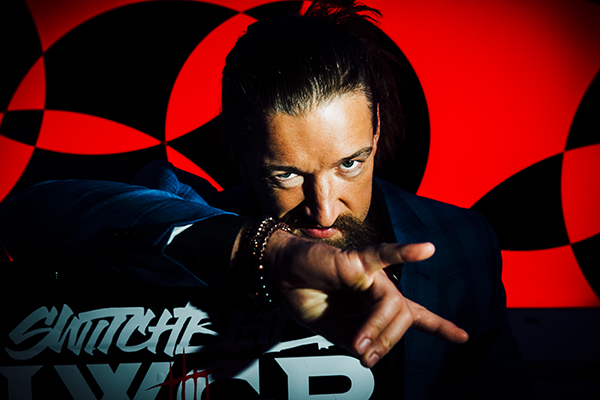
Exposition (Early 2021)
New Japan Pro Wrestling commonly presents stories told in cycles and parallels. Whether it be a hero finally overcoming the odds after repeated failure, or a battle to determine the face of the company, these stories tend to revolve around heroic figures. 2022 saw the culmination of a redemption arc, though with the focus on the villain in “Switchblade” Jay White. White’s journey spans over a year, through multiple promotions. One that took the “Still My Era” catchphrase from a statement of self-reassurance, to an undeniable truth at the summit of professional wrestling.
White’s failure and ultimate glory mirrors his opponent at Dominion 6.12, Kazuchika Okada. In his first few days in the dojo, White attended Wrestle Kingdom 9 with his young lion class, witnessing Okada’s greatest failure in the Tokyo Dome. Okada failed to surpass The Ace, Hiroshi Tanahashi, leaving in the most vulnerable state he’s ever shown. Okada would later claim championship gold at that year’s Dominion 7.5 in Osaka Jo Hall, launching one of the most successful spells of his career, and ultimate redemption the next January. White’s path was a much more arduous one, though it also began in the Tokyo Dome, in what was supposed to be his career defining moment.
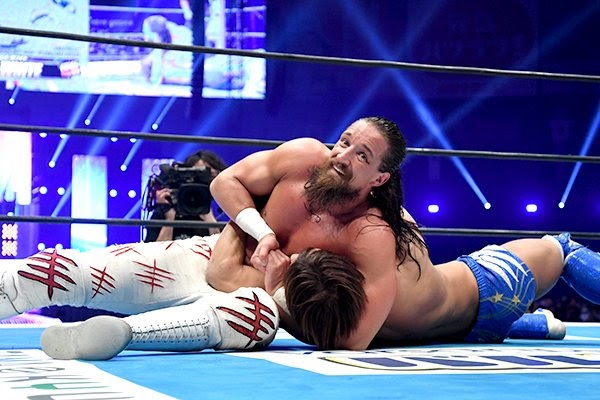
In possession of the Right to Challenge briefcase, White promised to disrupt the glory of whoever would enter the second night of Wrestle Kingdom 15 with the double gold of the IWGP Heavyweight and Intercontinental championships. In a 48 minute epic, White failed to usurp Kota Ibushi’s path to godhood, despite wrestling a nearly perfect match. Broken in defeat, White desperately clutched onto the championship belts in an absolute state of despair. He would later conduct a poignant post match interview, appearing the most vulnerable and human he has under the “Switchblade” moniker. An emotional interview that emitted a great deal of empathy for such a dastardly villain.
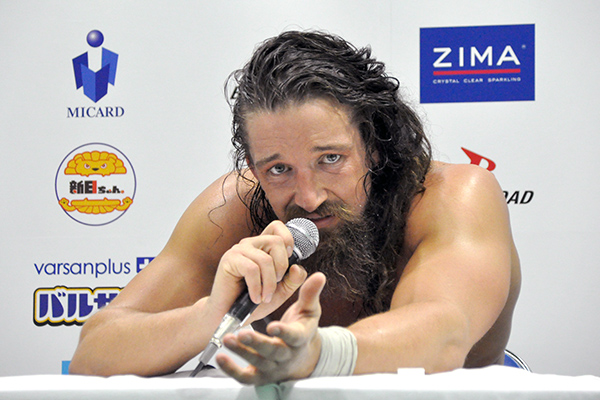
White agreed to wrestle the next night out of contractual obligation, taking a pin from Tomohiro Ishii in a multiman match. White’s future was uncertain at this point, though that changed in that evening’s post-match interviews. Ishii encouraged White to “get back into fighting shape, go out, and get revenge”. At the time it seemed like a general comment that fits Ishii’s character, as he always seeks to bring the intensity out of younger competitors. White would take the comment to heart as a mission statement for his journey. Remerging incensed towards Ishii, the two were scheduled for a special singles match at Castle Attack in Osaka Jo Hall, a place very special to Jay White.
Their program appeared as an intermittent feud before the New Japan Cup. White would pick up an extremely hard fought victory after targeting the ribs and respiratory system of Ishii. This was an uncommon strategy for White, who is known to target the head and neck to prepare for a Bladerunner, or weaken the legs for the TTO submission. This victory was presented as White avenging his G1 block loss, though the setting, motivation, and method of victory were all a display of foreshadowing of a greater story to take shape over the next year.
After crashing out of the New Japan Cup at the hands of David Finlay, White would capture NEVER gold from Hiroshi Tanahashi. A fitting end cap to this iteration of The Switchblade, completing the gauntlet of singles titles in the company. Though ultimately something was missing, and in May of 2021, White would depart to America for a year, in the name of revenge.
The US of JAY
Early 2021 provided the groundwork for Jay’s time in America. From his exploits in Impact!, to the “US of Jay” open challenge, there was a common thread in many of White’s matches during this period: The majority of his opponents were those White crossed paths with in his excursion in Ring of Honor. In order to find himself, White had to conquer ghosts of his past, and he had to do it without Gedo in his corner.
Perhaps the most profound match of White’s time away was his encounter with his old mentor, Alex Shelley, in March of 2022. A take on the classic Student vs Teacher story, the two had an extremely physical match, with White pinning his former friend for the victory. Post-match, Shelley offered a handshake, a direct callback to White’s first ever NJPW match seven years prior. White refused his hand, laughing in his face. This was no longer the Jamie that lived with Shelley years ago, this is the Switchblade that has passed the final test from his teacher.
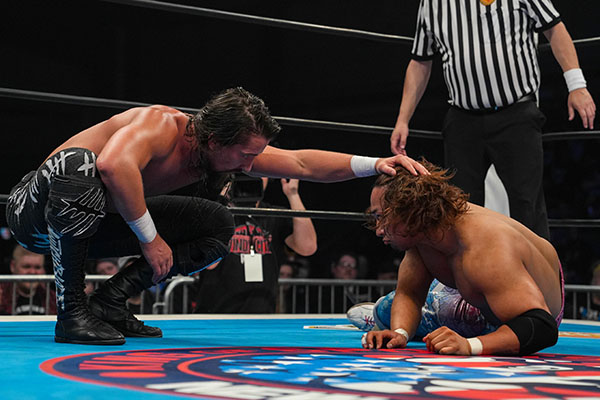
In April, White made his last appearance in an NJPW USA ring before heading east. His open challenge was accepted by Shota Umino, a young lion mid-excursion. The roles are reversed here, as White is now the veteran facing an up-and-comer in a foreign land. White wins in dominant fashion, notably working the ribs. This tactic has slowly but surely become more common in White’s matches, as if he’s been practicing this approach for a greater occasion. His usual arrogance in a post-match promo was replaced with an air of frustration. His return to Japan was nearing, and he wasn’t coming back alone.
The Catalyst
The second overarching story in White’s time in America was the legitimacy of his Bullet Club leadership. His appointment was a common criticism amongst fans for quite some time, and the group as a whole had grown stagnant. It doesn’t help that this hollow iteration of BC is scattered across the globe, while newer villainous groups continue to strengthen in Japan. White understood that he would need to take Bullet Club’s future into consideration, doing so by reconstructing the group in his image. During this process, White would appear in three separate promotions in a short span of time, all while significant changes were made to his group. This sense of unpredictability established the “Catalyst” aspect of his character. Gedo would still be draped in Switchblade merchandise on camera in his absence. This quiet representation gave White a sort of omnipresence amongst the chaos occurring overseas. This also kept an impending return in the mind of the viewers.
The biggest, and most polarizing change, was the expulsion of Guerrillas of Destiny in favor of the returning Good Brothers. White seemed at odds with G.O.D. for a while at this point, and the betrayal of this magnitude sent a message to anyone questioning his leadership. Bringing in Karl Anderson also maintained the lineage of the original lineup in the way Tama Tonga had, providing continuity in this restructured lineup. The shocking defection of Juice Robinson to the group once again brings echoes from White’s past. The two have shared a ring for White’s entire career in NJPW both as allies and adversaries. The further additions of Chris Bey and Ace Austin added both fresh faces, and a shot in the arm of the junior division. White taking the Finesser under his wing adds a dynamic of mentorship rarely presented in Bullet Club, and the changes altogether give White a group to surround himself with that closely aligns with his ideals. The only thing left to do was to debut this refreshed outfit in Japan. At the May 1st Wrestling Dontaku event, the catalyst revealed he was not pulling the strings from overseas – a fitting occasion, with the annual event in Fukuoka marking the birthplace of Bullet Club. Standing over a battered Kazuchika Okada, White made his title intentions known surrounded by a Bullet Club that finally felt like a legitimate threat again. A title match was scheduled for June 12th in Osaka Jo Hall, and it was time for Switchblade’s journey to come full circle.
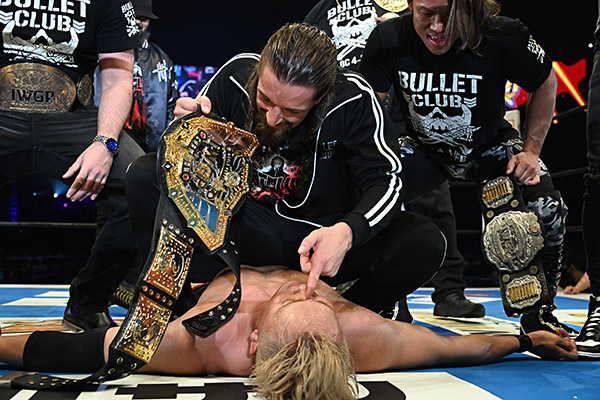
Osaka
At long last, Jay White was entering Osaka Jo Hall to fight for professional wrestling’s greatest prize. The two belts he desperately clung onto in the Tokyo Dome are now one unified championship, and the man holding it is the very same person who cut his era short three years prior: Kazuchika Okada. The Rainmaker is revitalized in his own right – a dominant champion claiming to be the only man fit to carry NJPW through its 50th anniversary. Despite his 3-1 singles record, White has never beaten Okada in a title match, let alone while in such form. To right the greatest wrongs of his career, White has to go through the face of the company at the peak of his powers. While it’s standard to present these battles as the heroic champion overcoming the odds of the Villain of The Month, it became clear that this match was presented as the culmination of White’s personal redemption arc.
At the opening bell, White doesn’t drop out of the ring to begin his usual mind games. Instead, he steps toe-to-toe with Okada, claiming he’ll beat him at his own game The two then proceed to lock up. White also waves down Gedo, insisting he can do this on his own. While this behavior was seen in the Ibushi match, it was a disarming ruse. White comes off more genuine in this instance, despite Gedo’s attempts to pull one on over his former protege in Okada. White finds himself second guessing these underhanded tactics again when Gedo encourages using a chair. Even though he’s swayed into these tactics, White knows he has to decide the outcome himself. He has to wrestle the perfect match.
White’s ring awareness and strategy allow him to have an answer for anything Okada throws at him. Things really fall into White’s favor when Okada goes for his signature offense on the floor, where White kicks into his counter wrestling expertise and viciously targets the ribs. Okada is known for his lengthy title matches, and effectively targeting the respiratory system (in addition to his history with back injuries) is the perfect counter strategy. Before, White would target a part of the body specific to his finishing moves, though here he’s playing the long game, using a tactic he perfected in his absence. The masterclass continues on a psychological level, as White uses the silence of the post-pandemic crowd against his opponent. In previous matches, this tactic is used to toy with the crowd, though here it’s used to pry at Okada’s emotions. White claims that Okada is content with the state of the crowds, and undermines his position as the leader of the company. White is as calm as ever in this bout. Showing restraint in count-out attempts, or waiting until later stages to dive deep into his arsenal. The Saito suplex to the outside is utilized much later than he would normally do so in the past. Okada’s stoic nature is put to the test here, and White preys on his lack of patience in the final third of the match. This stretch begins with White wearing down Okada’s knee to neutralize any sort of comeback. Okada becomes more frustrated and desperate, showing more vocal outbursts and attempting high risk moves, leading to the two trading submissions.
With the TTO locked in, White revels in the moment with Tanahashi at ringside. An arrogant reference to his first title triumph that took place in this very city. Upon a comeback attempt, Gedo distracts the referee, allowing White to escape the Money Clip via low blow. The final sequence of the match ensues at breakneck pace. A flurry of strikes, big moves and counter wrestling, with both digging deep in their repertoire. The standout of this exchange is a Bloody Sunday from White. A tribute to both his Bullet Club lineage and the man who recommended him to New Japan: Prince Devitt. Okada also turns back the clock, executing a landslide, which rarely results in defeat when landing the move. The final parallel between the two is featured in a callback to the iconic “Wrist-Control” moment that propelled Okada to the position of Ace. Though this time, the mirror reflects the opposite outcome. A frantic sequence of counter-wrestling ends with a Bladerunner out of a ripchord counter. A clean pinfall seals the victory for The Switchblade, bringing his journey to an end.
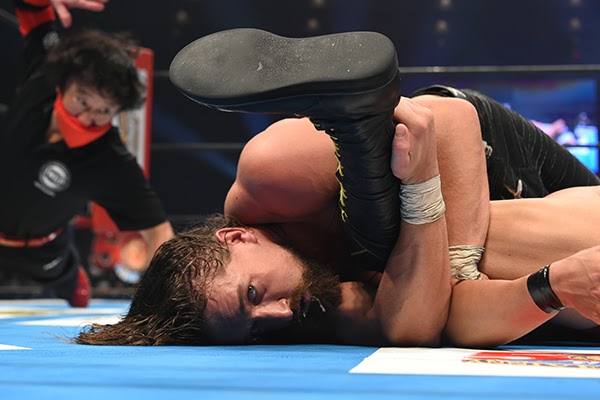
White addresses the Osaka crowd, calling back to his farewell in the same building six years ago. After his first title victory, he condemned the Osaka faithful. Now an older, matured White claims them as family after all, and a large section of the arena vocally embrace him. The man portrayed as the villain was able to galvanize the crowd to raise their voices against all regulations. He proved he belongs in New Japan’s upper echelon, representing the company as champion in their largest North American show later that month, and their largest domestic tour in the G1 tournament. White closes his speech with an emphatic reintroduction to the Switchblade Era, as his faction and the crowd rally behind their leader.
Jay White’s story is another success of NJPW’s modern era, both in and out of the confines of narrative. It shows that professional wrestling can successfully tell a story from the villain’s point of view. Allowing the audience to empathize with them, with the same attention to detail and methods used in their most celebrated story arcs. With the wrestling world at his feet, the sky’s the limit for Switchblade, and there’s no choice but to breathe with him.
Photo credits: @njpwglobal, links to matches and backstage comments from NJPWWorld can be found throughout this article and on request from @sixtyminutedraw.
Steve goes by @SSavich12 on twitter.
